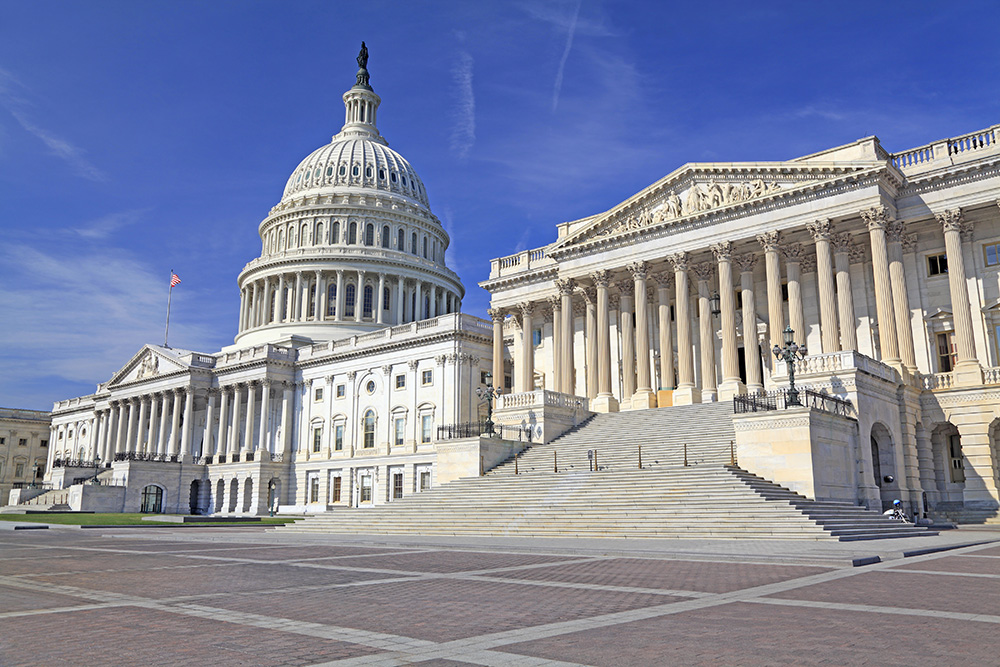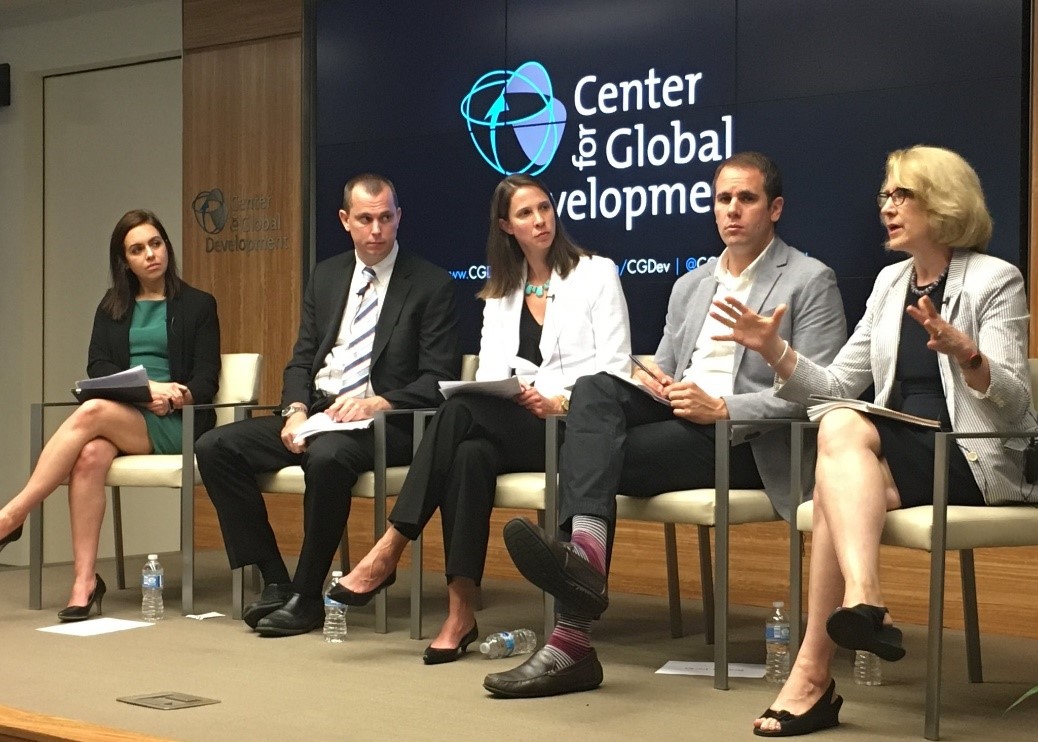With Hurricane Irma now pushing a devastating path through the Caribbean, USAID is gearing up to do what it does best. Its Disaster Assistance Response Teams (DARTs) do amazing work—deploying rapidly in the wake of natural hazards like hurricanes and often bringing the logistical might of the US military with them. These teams go in big and fast to save lives, distribute food, set up emergency shelter, and prevent secondary impacts like disease outbreaks.
But then things begin to falter.
When the effort pivots from disaster response to post-disaster recovery, USAID’s efforts are almost invariably understaffed, underfunded, and underwhelming. USAID development professionals are increasingly trying to take the baton when their disaster response colleagues depart; but invariably they find themselves hamstrung. This is because the powerful toolkit USAID has for disaster response abruptly turns into a pumpkin and disappears during the reconstruction and recovery phase.
With Irma raging ahead and other storms on the horizon, I fear the USAID is again poised to win the response and lose the recovery.
As the head of US foreign disaster relief during the Obama administration, I managed many of these mega-disasters. Typhoon Haiyan in the Philippines, the strongest storm to make landfall in recorded history (a record that Irma could eclipse). The massive 2015 earthquake in Nepal. The Ebola outbreak in West Africa. Hurricane Matthew, which ravaged Haiti last fall. In each of these disasters, USAID disaster teams deployed decisively, flexibly, and with ample resources—and their actions saved many lives.
But if the agency went four-for-four on those disaster responses, we went one-for-four on their recovery phases. Only the Ebola recovery was well resourced, through a special appropriation from Congress. The other three disasters were largely orphaned once the recovery phase began, because USAID’s ambitious plans for recovery support received only a fraction of what they required.
This is not a new problem. The post-disaster recovery gap has bedeviled the US government for decades. Over the past 25 years there have been countless initiatives and acronyms thrown at the problem, but little real progress. The core obstacle is that the USAID lacks the people, resources, and flexibility needed to ensure effective recovery.
This is a shame, because the real work of a natural disaster is in the long-term rebuilding, not the immediate lifesaving. Most of the people who die in a natural disaster do so in a short window of time as the event peaks: crushed in falling buildings as the ground trembles or swept away by torrential currents of water. Few of these people are plausibly savable once an event is underway. But nearly all of them are savable through good preparedness and early warning (which are chronically underfunded).
For those who do survive, the road ahead is difficult. International resources flood in for the immediate response and invariably falter beyond that. So families often find that the “temporary” shelters they receive in the immediate aftermath become semi-permanent due to lack of reconstruction assistance. And without support to re-start their livelihoods, they lack the resources to rebuild for themselves.
The jarring contrast in how USAID performs on relief vs. recovery mirrors a jarring contrast in how Congress allocates and oversees the resources it gives to USAID. For disaster response, Congress grants the agency broad flexibility to contract staff, allocate resources, and set response priorities. It has established a long-standing and well-funded disaster assistance account to support the agency’s disaster efforts. And it has also given USAID a “notwithstanding” authority for disaster response—meaning that USAID can (judiciously) choose to bypass normal legal requirements if they would obstruct a speedy response. This means that when a disaster strikes, USAID can rapidly mobilize reserve staff, assess needs, and focus resources on the areas of greatest need.
But in the recovery phase, by contrast, USAID becomes straitjacketed by congressional requirements. Reconstruction needs are generally funded through other foreign aid accounts, which lack the flexibility the disaster account enjoys. To spend money from these accounts, USAID must go through arduous federally-mandated procurement procedures, which can take one to two years to complete. Needless to say, that sort of delay doesn’t much help a population that is living under plastic sheeting after losing their homes and livelihoods.
But it gets worse. Before USAID can even begin that arduous programming process, it first must find the money—and rarely does Congress appropriate any extra funds. While Congress issued special appropriations in the cases of Ebola and the 2010 Haiti earthquake, these are rare exceptions. More typically, USAID is forced to find resources within its existing funding—meaning cuts to other programs. USAID needs to be willing to make those hard trade-offs—but even when it is, it finds itself prevented from doing so by congressional spending directives. Each year, Congress mandates that USAID spend predetermined amounts on major sectors like education, health, or microfinance. These directives leave little flexibility for the agency to change course and reprioritize after a disaster strikes.
And then of course there is the problem of people—or rather the problem of too few people. Ramping up a large recovery effort takes bodies—people to assess needs, coordinate with partners, plan programs, and issue grants. At the height of the 2016 response to Hurricane Matthew in Haiti, USAID deployed more than 60 disaster professionals to the country. Once that team departed, the recovery planning fell to the local USAID development mission, which lacked the bandwidth to cover this role along with its day-to-day obligations. This is a common story, yet the agency lacks an organized roster to identify, hire, train, and deploy staff for this sort of function. Congressionally-imposed caps on staffing levels make it difficult for the agency to staff for these occasional contingencies without undermining other functions.
Fortunately, much of this can be fixed—if Congress and the Trump administration choose to do so. The administration is midway through a review and reorganization of foreign affairs and foreign aid tools. Congress has signaled that it wants to be involved—the foreign aid budget draft released by the Senate this week requires that Congress be consulted on any major changes. So the time is ripe to fix this long-running problem.
How to do so? As I wrote in a recent paper advising the administration’s reform effort, there are some concrete options available—right now—to give USAID the resources, people and flexibility to nimbly execute post-disaster recovery efforts.
On the resources front, Congress could help greatly by authorizing earmark relief to USAID in the wake of a declared disaster. Granting USAID’s country programs a two- to three-year waiver on fulfilling sector earmark directives would free up resources to be redirected toward reconstruction programs. Similarly, loosening the restrictions on hiring—particularly on the agency’s staffing cap—could enable USAID to build a deeper bench of transition and recovery experts to deploy after disasters, without undermining ongoing program obligations elsewhere. Finally, USAID should be more aggressive—with congressional backing—in waiving standard grant-making processes in post-disaster settings. Rather than reverting to the standard one- to two-year turnaround for developing and issuing new grants, USAID should exercise authorities to waive those requirements when exigent circumstances demand faster action.
The perpetual question, of course, is one of trust. Congress applies tight restrictions on staffing, funding, and procedures because it has not historically trusted the agency’s own judgment in these matters. Yet the agency’s consistently excellent performance on disaster response is a powerful counterpoint: when given greater leeway, USAID can use it responsibly to deliver powerful programming. It’s time for Congress, and the administration, to take a joint leap of faith and equip the agency to be as effective on disaster recovery as it is on disaster response.
Disclaimer
CGD blog posts reflect the views of the authors, drawing on prior research and experience in their areas of expertise. CGD is a nonpartisan, independent organization and does not take institutional positions.
Image credit for social media/web: Social media image by NASA/Antti Lipponen





